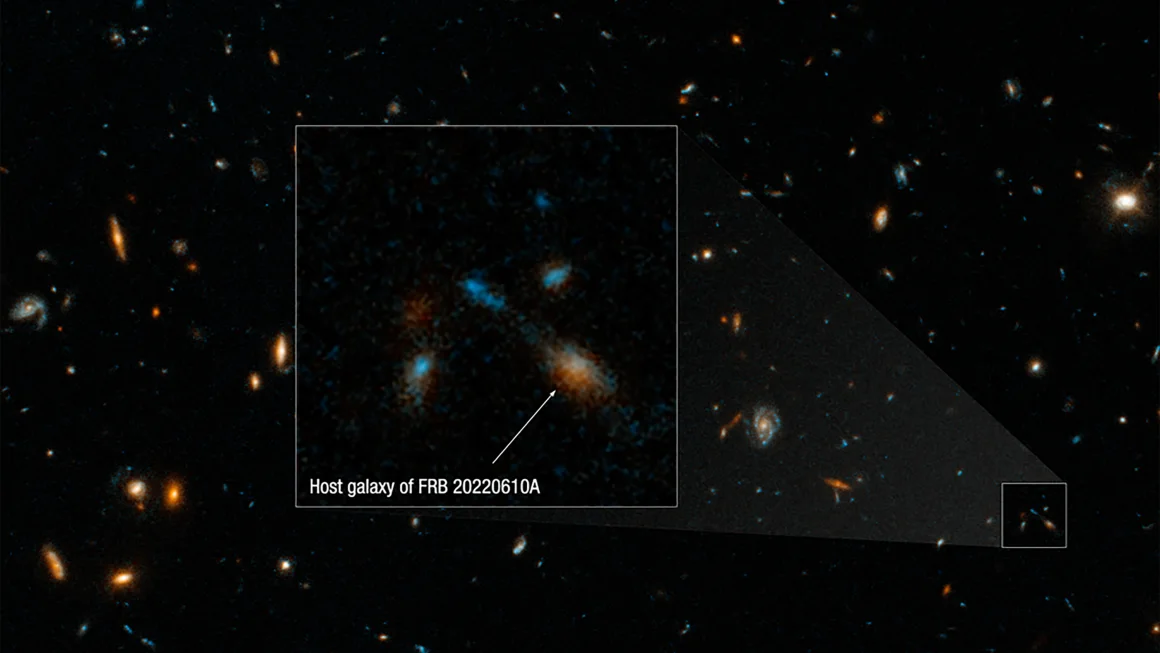Astronomers have made a groundbreaking discovery in astrophysics by tracing a powerful and distant fast radio burst named FRB 20220610A to its remarkable origin. This discovery challenges our understanding of these enigmatic cosmic phenomena and opens new avenues to study the universe’s most mysterious events.
The signal, detected on June 10, 2022, travelled an astounding 8 billion light-years to reach our planet, offering a rare glimpse into the depths of the cosmos. Fast radio bursts (FRBs) are intense, fleeting bursts of radio waves whose origins have remained a mystery since their first detection in 2007. Despite their elusive nature, studying FRBs has become a cornerstone in understanding the universe’s vast and complex mechanisms.
FRB 20220610A stands out for its immense energy, releasing in less than a millisecond what our sun emits over 30 years. Such extraordinary power has been brutal to trace due to the brief lifespan of these bursts. However, advanced radio telescopes like the Australian Square Kilometre Array Pathfinder (ASKAP) and the European Southern Observatory’s Very Large Telescope have enabled astronomers to pinpoint the source of these cosmic enigmas.
Surprisingly, the origin of FRB 20220610A was identified not in an isolated galaxy but in a compact group of at least seven galaxies. This “blob-like” cluster, small enough to fit within the Milky Way, was revealed in stunning detail by the Hubble Space Telescope. Alexa Gordon, the lead study author and a doctoral student at Northwestern University, highlighted the significance of this discovery, stating, “It’s these types of environments — these weird ones — that drive us toward a better understanding of the mystery of FRBs.”
The galactic group, known for its density, presents an exceptional site for research. Wen-fai Fong, an associate professor at Northwestern and study coauthor, notes the possibility of these interacting galaxies triggering bursts of star formation, potentially linked to the FRB’s genesis. This discovery diverges from the usual trend of locating FRBs in isolated galaxies or globular clusters, suggesting a more complex genesis of these bursts.
The ongoing investigation into the origins of FRBs points to compact objects like black holes, neutron stars, or magnetars as potential sources. As they travel across billions of years, these bursts interact with cosmic material, providing invaluable insights into the nature of the universe. Yuxin Vic Dong, a doctoral student at Northwestern, emphasizes the rarity of FRB 20220610A’s birthplace, marking a significant milestone in understanding these phenomena.
The study of FRB 20220610A represents a monumental step in astrophysics, offering a new perspective on the cosmic events shaping our universe. As astronomers continue to develop more sensitive detection methods, the mysteries surrounding fast radio bursts are slowly unravelling, bringing us closer to answering fundamental questions about the cosmos.






















+ There are no comments
Add yours